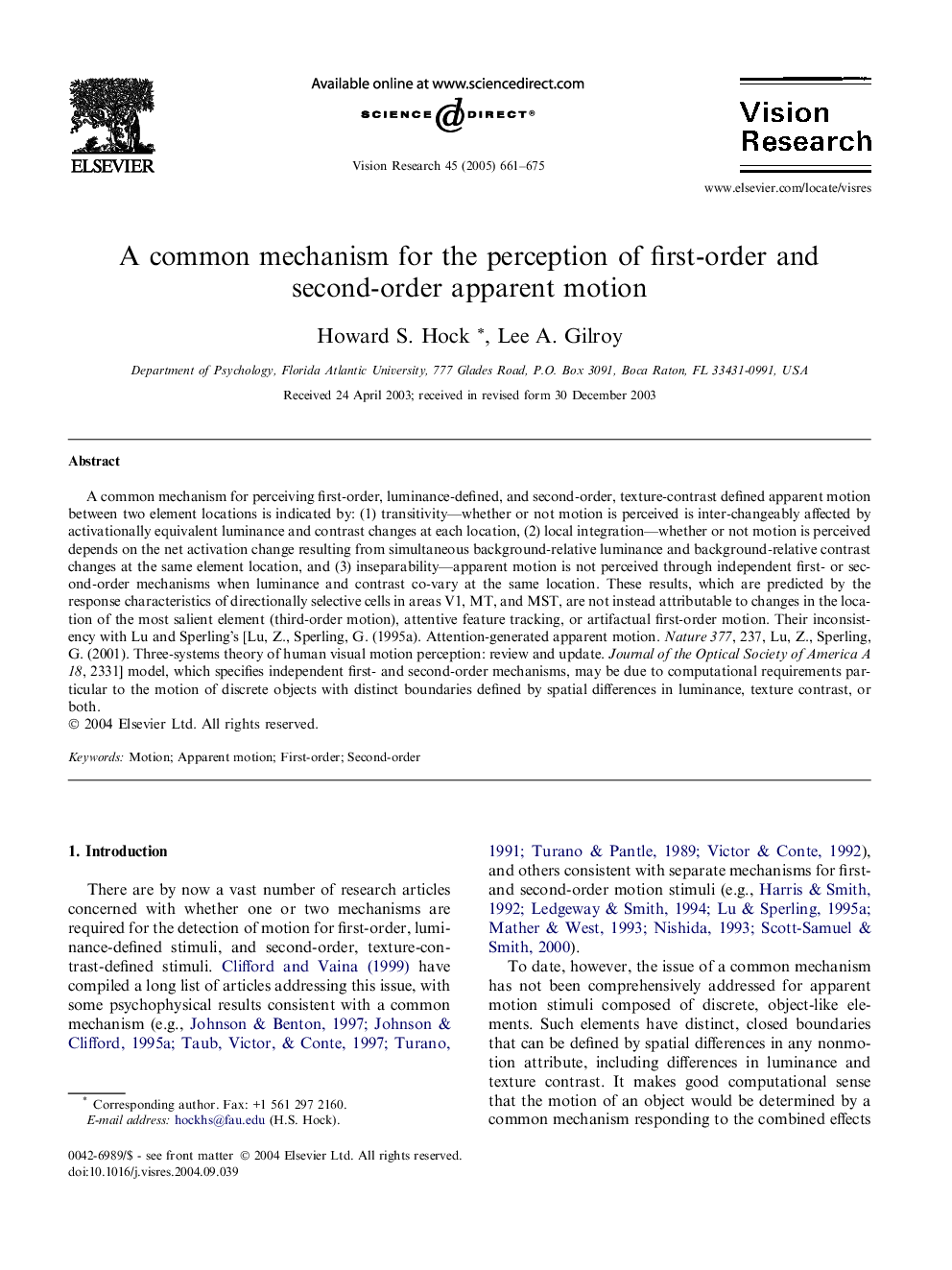| Article ID | Journal | Published Year | Pages | File Type |
|---|---|---|---|---|
| 9348529 | Vision Research | 2005 | 15 Pages |
Abstract
A common mechanism for perceiving first-order, luminance-defined, and second-order, texture-contrast defined apparent motion between two element locations is indicated by: (1) transitivity-whether or not motion is perceived is inter-changeably affected by activationally equivalent luminance and contrast changes at each location, (2) local integration-whether or not motion is perceived depends on the net activation change resulting from simultaneous background-relative luminance and background-relative contrast changes at the same element location, and (3) inseparability-apparent motion is not perceived through independent first- or second-order mechanisms when luminance and contrast co-vary at the same location. These results, which are predicted by the response characteristics of directionally selective cells in areas V1, MT, and MST, are not instead attributable to changes in the location of the most salient element (third-order motion), attentive feature tracking, or artifactual first-order motion. Their inconsistency with Lu and Sperling's [Lu, Z., Sperling, G. (1995a). Attention-generated apparent motion. Nature 377, 237, Lu, Z., Sperling, G. (2001). Three-systems theory of human visual motion perception: review and update. Journal of the Optical Society of America A 18, 2331] model, which specifies independent first- and second-order mechanisms, may be due to computational requirements particular to the motion of discrete objects with distinct boundaries defined by spatial differences in luminance, texture contrast, or both.
Related Topics
Life Sciences
Neuroscience
Sensory Systems
Authors
Howard S. Hock, Lee A. Gilroy,
